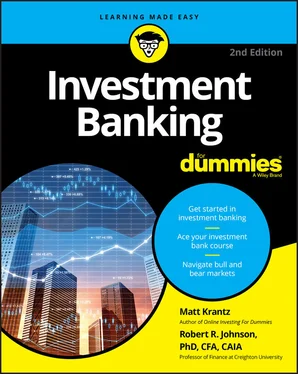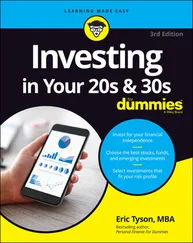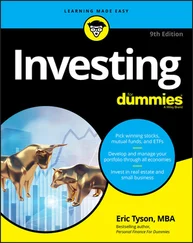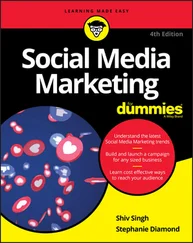Here, companies are practically preparing their “I told you so” defense in case the stock doesn’t work out. You’ll find references to just about anything that could possibly happen in this section, along with loads of canned, boilerplate warnings that appear to be cut-and-pasted from filings.
 Although most of the risk factors are boilerplate, you can find some gems in there. This can be an area on which investment bankers spent quite a bit of time, so pay attention.
Although most of the risk factors are boilerplate, you can find some gems in there. This can be an area on which investment bankers spent quite a bit of time, so pay attention.
Industry data and other metrics
Just as a rising tide lifts all boats, investors know that companies are often only as good as the industries they’re in. If you invest in a grocery store company, investors know to expect relatively thin profit margins (meaning, the company will likely only retain a small slice of its total revenue as profit, because that’s how the industry works).
And because the performance of the industry has such a large bearing on how well a company does, it’s a critical aspect of the prospectus. Investors will find a description of the financial measures that are most important in the industry, as well as an outline of how the company going public stacks up.
When a company goes public, it can raise hundreds of millions if not billions of dollars overnight. Literally. Isn’t capitalism wonderful? But hopefully the money isn’t being raised so the CEO can throw a heck of a party or buy a billion black hoodies. The money being generated by the IPO is for some sort of corporate purpose, and it’s in this section of the prospectus that this purpose is revealed to investors.
Normally, a young company going public is raising money because it needs cash to expand and grow. But there are other reasons why a company may go public, including to pay off part of its debt, to purchase another company, or to allow its employees to sell their shares and raise money. Whatever the reason, it must be outlined in detail here.
 IPO investors usually look askance at IPOs where the money raised isn’t being used by the company. Investors are especially skeptical when many of the shares being sold in an IPO are being sold not by the company itself, but by the CEO and other company executives. After all, these insiders know the company better than anyone. If they’re bailing out, why would investors with less information jump in?
IPO investors usually look askance at IPOs where the money raised isn’t being used by the company. Investors are especially skeptical when many of the shares being sold in an IPO are being sold not by the company itself, but by the CEO and other company executives. After all, these insiders know the company better than anyone. If they’re bailing out, why would investors with less information jump in?
The capitalization structure of a company is critical to IPO investors. The capitalization structure is a description of the types of financing that were used by the company to raise money. The typical company has a blend of forms of financing ranging from bank loans to outstanding bond debt and perhaps preferred stock (a special type of stock that typically pays a supersized dividend and has greater claims to the company than the regular, common stock that’s issued by companies).
Some hard-core financial types skip past many of the sections of the prospectus listed earlier and go straight for this part. Here’s where you find the company’s financial statements (detailed financial records that show how much the company made in profit and revenue, as well as everything it owns and owes). You can find more information about these financial statements, including the income statement and balance sheet, in Chapter 7.
Management’s discussion and analysis of financial condition
Wow, that’s a mouthful. But that’s the section’s official name. Most investment bankers refer to this important section of the prospectus by its acronym, MD&A. It’s in this section of the prospectus that the company’s management team, with the help of the investment bank, steps through the financial statements, almost line-by-line, with full description. Any numbers that are a little offbeat or unusually large or small should be detailed in this section.
If investors are seriously considering forking over money to buy a piece of a company, they’d better know at least what the company does. The business section of the prospectus is the place where the company explains its reason for being. The company often explains the products it makes or the services it provides and why customers deem them worthy to be bought.
A company is only as good as the people running the place. And that’s not a detail missed by IPO investors. The management team of a young company is critical. Decisions made by the top brass will largely determine if the company is able to head off the inevitable challenges. In the management section of the prospectus, you find a listing of all the top management team members — usually the chief executive officer (CEO), chief operating officer (COO), chief financial officer (CFO), and the members of the board of directors (the group of experts who are supposed to look out for the interests of investors and oversee the management). In the management portion of the prospectus, you also find a short biography on all the top people at the company, including their ages. Want to feel old? Facebook CEO Mark Zuckerberg was just 27 according to the company’s prospectus when the company was going public.
The CEO and other members of the management team aren’t running the company you’re looking to invest in out of the goodness of their hearts. The managers of top companies are paid, usually huge sums of money, for taking on the job. In this section of the prospectus, investors find out exactly how much these people are being paid.
 Reading the executive pay of CEOs can be like trying to solve some kind of financial puzzle. These top executives get paid in all sorts of ways, not just a base salary but a tangled quilt of bonuses and stock-based pay. Getting bogged down in the details is easy. Luckily, regulators have leaned on companies and forced them to simplify the way they explain executive pay. If you just want to get an idea of what the CEO was paid, head for the summary compensation table, where you find each executive listed along with his or her salary, bonus, stock awards, and all other pay listed clearly.
Reading the executive pay of CEOs can be like trying to solve some kind of financial puzzle. These top executives get paid in all sorts of ways, not just a base salary but a tangled quilt of bonuses and stock-based pay. Getting bogged down in the details is easy. Luckily, regulators have leaned on companies and forced them to simplify the way they explain executive pay. If you just want to get an idea of what the CEO was paid, head for the summary compensation table, where you find each executive listed along with his or her salary, bonus, stock awards, and all other pay listed clearly.
Related-party transactions
Double-dealing may be typical in mystery novels, but that’s exactly the kind of thing you don’t want going on at a company you’re looking to invest in. The trouble with IPOs, though, is that many of these companies trace their roots to being practically family business. Many young companies, even after going public, may have complicated business relationships between founders, their families or friends. All these tangled dealings must be highlighted and explained as related-party transactions.
Principal and selling shareholders
When you buy shares of an IPO, you’re buying those shares from someone. If a company is private, it doesn’t have to tell anyone who its investors are. But when a company seeks to raise money from the public, in an IPO, the rules of disclosure get really strict. As an investor, you have the right to know who is selling. Most of the time, the shares of a company are being issued by the company itself. But in some cases, you’ll see selling by early investors — often venture capitalists — who want to cash out of the investment. If you see lots of insiders selling, that generally isn’t a good sign.
Читать дальше

 Although most of the risk factors are boilerplate, you can find some gems in there. This can be an area on which investment bankers spent quite a bit of time, so pay attention.
Although most of the risk factors are boilerplate, you can find some gems in there. This can be an area on which investment bankers spent quite a bit of time, so pay attention. IPO investors usually look askance at IPOs where the money raised isn’t being used by the company. Investors are especially skeptical when many of the shares being sold in an IPO are being sold not by the company itself, but by the CEO and other company executives. After all, these insiders know the company better than anyone. If they’re bailing out, why would investors with less information jump in?
IPO investors usually look askance at IPOs where the money raised isn’t being used by the company. Investors are especially skeptical when many of the shares being sold in an IPO are being sold not by the company itself, but by the CEO and other company executives. After all, these insiders know the company better than anyone. If they’re bailing out, why would investors with less information jump in?










